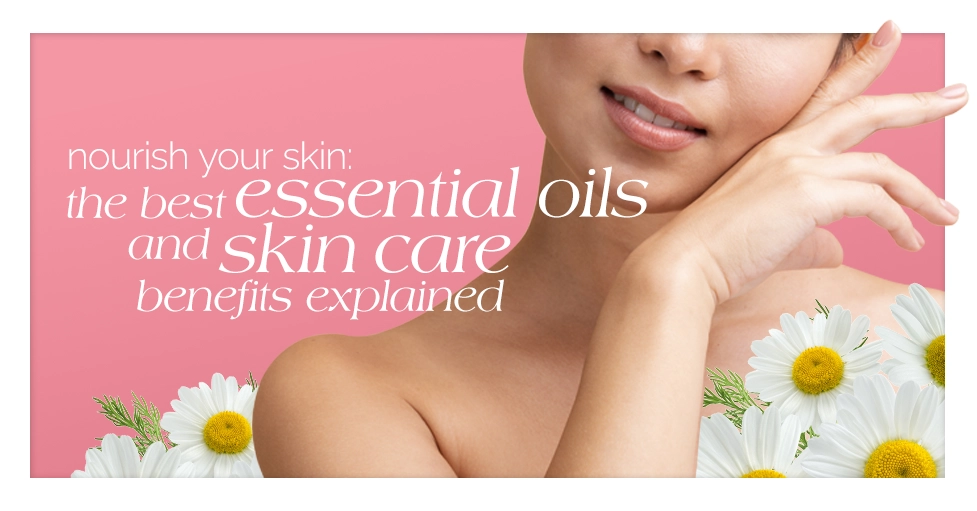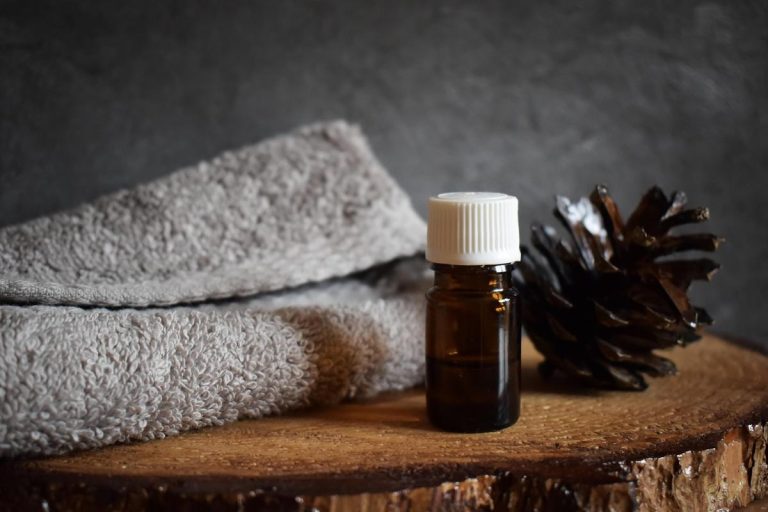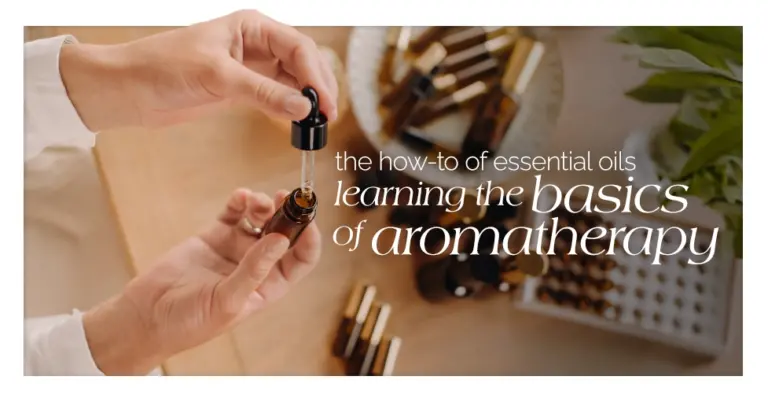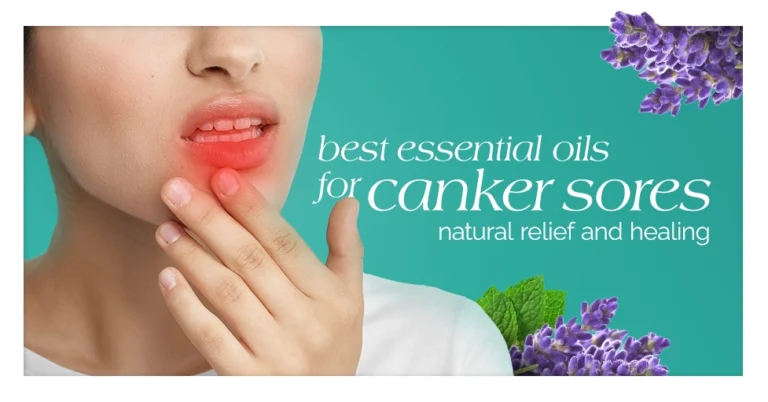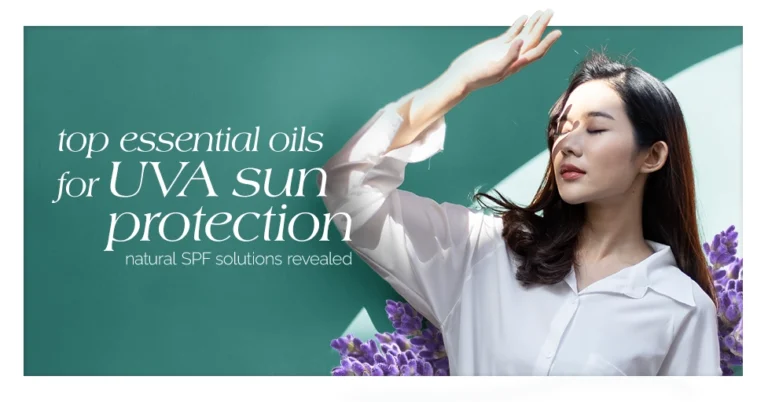Nourish Your Skin: The Best Essential Oils and Skin Care Benefits Explained
Navigating the benefits of essential oils and skin care? Discover which oils suit your skin concerns, from combating acne to soothing inflammation, while learning to use them safely. Find out about carrier oil pairings and recipes for effective, tailored skin solutions. This guide delivers practical insight without fluff – prepare for clearer, healthier skin with the help of nature’s potent essences.
Essential Insights: Unlocking the Power of Essential Oils for Skin Care
Understanding Essential Oils and Their Role in Skin Care
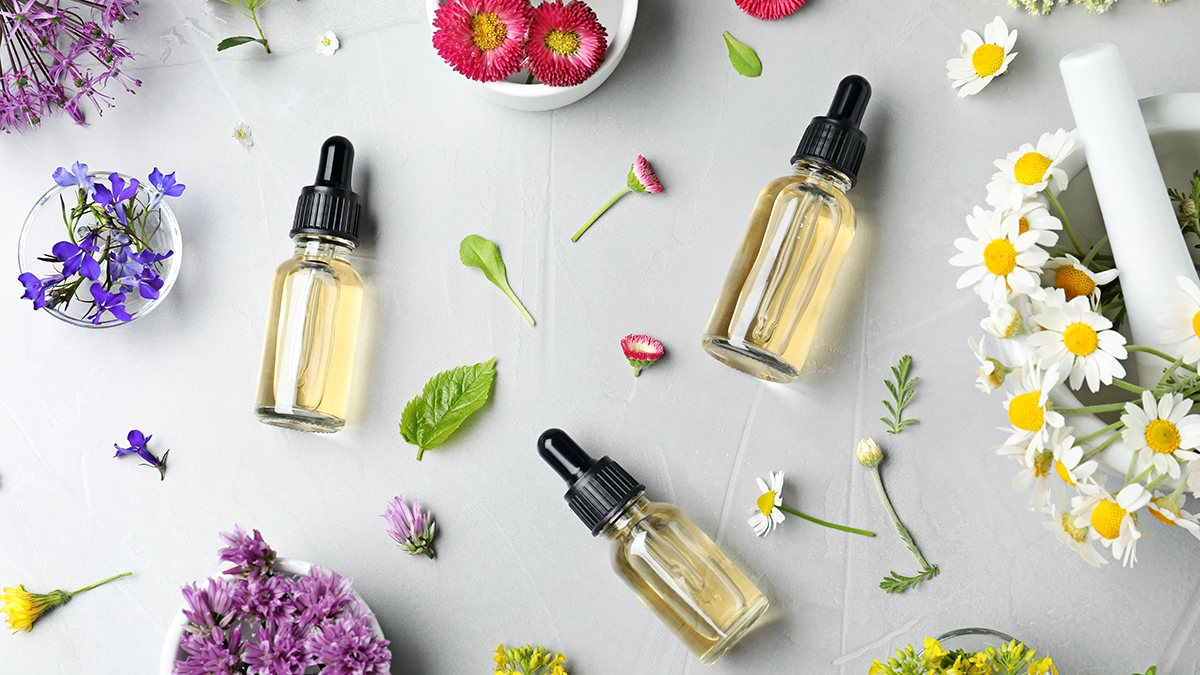
Essential oils, the volatile essences of plants, have been treasured for centuries, not only for their intense fragrances but also for their multifaceted roles in promoting skin health and beauty. These natural elixirs, hailing from the roots, flowers, leaves, and fruits of various botanicals, are topically applied to address common skin issues like acne, wrinkles, and dryness, offering a spectrum of antibacterial and anti-inflammatory properties.
However, incorporating essential oils into skincare requires balance, as their potential extends beyond benefits to risks if not used carefully and thoughtfully. They offer protection against various skin issues, but it’s essential to comprehend their correct usage to prevent irritation or harm, especially when it comes to skin oils.
Selecting suitable essential oils for skin care needs careful consideration. It includes sourcing from reputable suppliers ensuring purity, freshness, and correct concentrations, and often consulting professionals for advice to align the oils with particular skin issues. The appeal of essential oils in skincare stems from their natural source and the potential of a comprehensive, holistic approach. Nevertheless, incorporating them into a daily routine requires careful consideration and informed decisions.

Sign Up to Get Your FREE
e-Book Here…
The Distillation Process and Purity
The purity of essential oils results from rigorous distillation, an age-old method that extracts volatile oils from plants. Steam distillation, the common method, is a combination of preparation, heating, vaporization, condensation, collection, and refinement, all carefully orchestrated to capture the volatile plant compounds in their purest essence.
This purity is not a mere formality; it is the cornerstone of safety in application and the therapeutic effectiveness of essential oils. Only with expert sourcing and extraction processes can one procure high-quality essential oil products that are both effective and safe for skincare.
The pursuit of top-quality essential oils resembles the search for a fine wine—both necessitate knowledge of the origin, the production method, and an ability to appreciate the intricate details. As a connoisseur would value the vineyard’s terroir, so should a skincare enthusiast value the distillation process that yields a pure and effective essential oil. This understanding is not just for the sake of indulgence but for the assurance that the oils will perform their intended role on the skin with grace and efficacy.
The Synergy Between Essential Oils and Skin Cells
Essential oils have an incredible capacity to boost skin penetration, by interacting with the skin’s surface layer, influencing the structure of lipids and keratin, and changing the cell membrane’s ion pump. This interaction can temporarily change the skin’s barrier function, increasing permeability and allowing for a greater absorption3 of various beneficial substances.
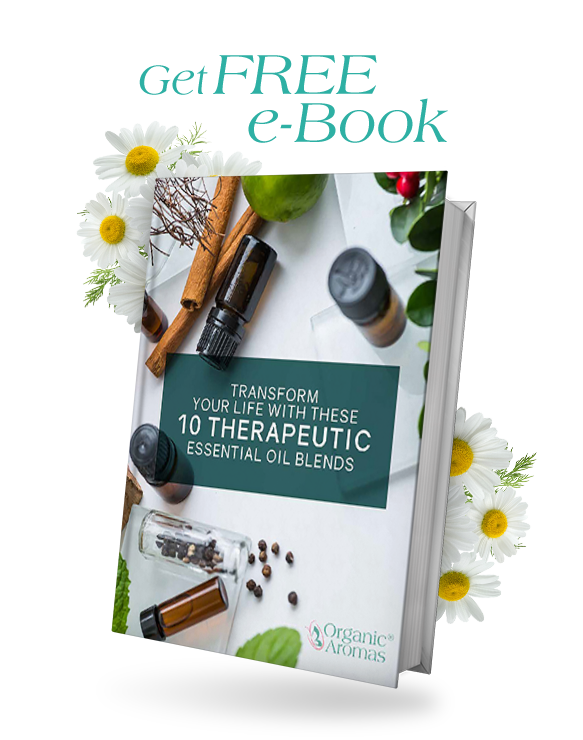
Sign Up to Get Your FREE Essential Oils e-Book Here
Enhancing Skin Absorption: The Multifaceted Magic of Essential Oils
Essential oils can be like magical keys that unlock the doors to deeper layers of your skin enhancing its ability to absorb healing and nourishing substances. Here’s how they work their magic:
- Unlocking the Skin’s Fortress: Picture your skin as a fortress—resilient and selective about what it lets through. Essential oils start their work here, with their small, lipophilic molecules seamlessly blending with the skin’s lipid matrix. This action softens the fortress walls (the skin’s barrier), creating minute pathways that make the skin more permeable.
- Whispering to Keratin: Within the skin’s fortifications lie the structural proteins, keratin, much like the bricks of the fortress. Essential oils engage in a subtle dance with keratin, gently persuading it to relax its tight formation. This interaction opens up new channels, allowing essential oils, along with their companion nutrients, to penetrate deeper, reaching where they are most needed.
- Modulating the Guards: At the heart of the skin’s ability to maintain balance are the cell membranes, equipped with ion pumps that act as vigilant guards, regulating what enters and exits the cells. Essential oils, through their unique chemical compositions, can influence these ion pumps. They tweak the guards’ rules, enhancing the cellular uptake of beneficial substances while maintaining the skin’s vital equilibrium.
- A Symphony of Cellular Signaling: By engaging with cell membranes and ion pumps, essential oils don’t just alter physical barriers; they also play a role in the symphony of cellular signaling. They can adjust the flow of critical ions that act as cellular messengers, thus influencing a range of cellular functions from hydration to repair, and even defense mechanisms.
This multifaceted approach—softening the barrier, creating pathways in keratin, adjusting the guardrails at the cellular level, and tuning into the cellular communication network—illustrates the profound capacity of essential oils to enhance skin penetration.
It’s a testament to their role as not just fragrant drops of nature, but powerful facilitators of skin health and rejuvenation, bridging the gap between beauty and biology in every drop.
To harness the full potential of essential oils as penetration enhancers, one must consider their unique biological properties. Each oil possesses unique properties that interact positively with skin cells to maximize absorption and improve the skin’s overall health. Imagine a key designed to fit perfectly into a lock, opening the door to a world of rejuvenated, vibrant skin—that is the synergy between essential oils and skin cells.
Best Essential Oils and Skin Care
| Essential Oil | Skin Beneficial Properties | Primary Compounds Responsible |
|---|---|---|
| Lavender | Soothing, anti-inflammatory, promotes cell regeneration | Linalool, linalyl acetate |
| Tea Tree | Antimicrobial, antiseptic, acne-fighting | Terpinen-4-ol, γ-terpinene |
| Frankincense | Anti-aging, astringent, promotes cell regeneration | α-Pinene, limonene, boswellic acid |
| Chamomile | Soothing, anti-inflammatory, healing for sensitive skin | Bisabolol, chamazulene |
| Geranium | Balancing sebum production, toning, antimicrobial | Geraniol, citronellol |
| Ylang Ylang | Sebum balancing, moisturizing, improves skin elasticity | Linalool, β-caryophyllene |
| Peppermint | Cooling, soothing, reduces redness | Menthol, menthone |
| Helichrysum | Anti-inflammatory, cicatrisant, promotes healing of scars and wounds | Neryl acetate, γ-curcumene |
| Neroli | Cell regeneration, skin elasticity, scar healing | Linalool, limonene |
| Myrrh | Moisturizes, reduces redness, promotes skin health | Furanoedudesma-1,3-diene, lindestrene |
Comedogenic and Essential Oils: A Summary
Comedogenic [ko-mə-jen-ik]: A term derived from Latin, indicating substances that may clog pores and trigger acne. It’s crucial for identifying skincare ingredients that pose a risk to acne-prone skin.
Non-Comedogenic Nature of Essential Oils: Essential oils are unique in skincare for not clogging pores, thanks to their volatile organic compounds (like monoterpenes and phenols) which evaporate without leaving residue. Their antibacterial and anti-inflammatory properties also help keep skin clear.
The Dynamic Duo: Essential Oils and Carrier Oils
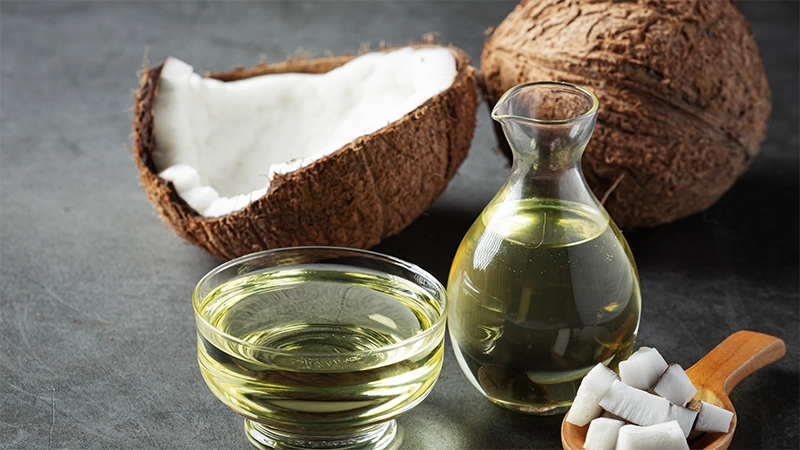
For the topical use of essential oils, combining them with carrier oils is mandatory. This pair ensures skin protection from possible irritation and negative reactions. Carrier oils are not just a base; they are the nurturing ground that allows essential oils to bestow their benefits without overwhelming the skin. The choice of carrier oil is pivotal, especially when addressing specific skin concerns.
Here are some examples of carrier oils and their benefits:
- Sweet Almond oil: great for dry skin
- Avocado oil: nourishing for dry and mature skin
- Coconut oil: moisturizing and soothing for all skin types
- Hemp Seed oil: hydrating and balancing for dry and sensitive skin
- Jojoba oil: similar to the skin’s natural oils, ideal for sensitive skin
By choosing the right carrier oil, you can enhance the effectiveness of your essential oil blends and cater to your specific skin needs.
Choosing an appropriate carrier oil allows customization of the skincare experience to meet the individual needs of the skin. For mature skin yearning for nurturing, oils such as Rosehip, Olive, or Argan may be recommended, while a patch test ensures compatibility and guards against allergic reactions before full application.
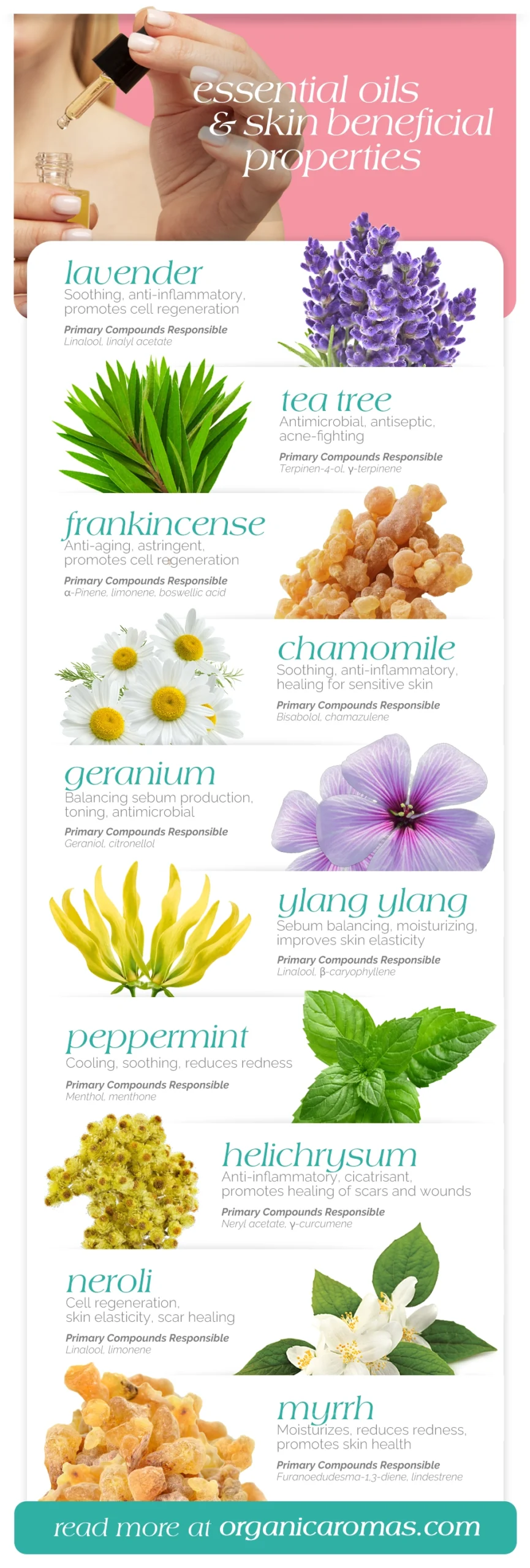
Understanding Carrier Oils: From Dry to Heavy
Dry Oils
Dry oils, like rosehip, grapeseed, and hemp seed oil, have a lightweight, non-greasy texture. They absorb quickly into the skin, providing hydration and nutrients without leaving an oily residue. These oils are ideal for oily, acne-prone, or sensitive skin types because they moisturize without clogging pores.
Heavy Oils
On the other end of the spectrum, heavy oils are richer and take longer to absorb into the skin. Examples include olive oil, coconut oil, and castor oil. These oils are deeply moisturizing and are often used for very dry skin, hair treatments, or as a part of a nighttime skincare routine. Due to their richer nature, they might leave a greasy residue if used in large amounts, making them less suitable for oily skin types.
Medium Oils
Falling somewhere in between are medium oils, which offer a balance of nourishing properties and relatively quick absorption without too much residue. Examples include jojoba oil and sweet almond oil. These oils are versatile and suitable for a wide range of skin types, making them popular choices for general skincare and massage.
Coconut Oil and Tea Tree Oil: A Match for Acne-Prone Skin
Coconut oil, rich in lauric acid, naturally combats acne-causing bacteria such as Propionibacterium acnes. For a safe and effective application, blending coconut oil with essential oils like tea tree oil—which not only reduces acne but also soothes inflamed skin—requires dilution with a carrier oil.
Blending these with gentle carrier oils ensures the mixture can be applied directly to the skin, allowing the antimicrobial and soothing properties of the essential oils to penetrate the pores without irritation. Adding lavender and geranium essential oils into the mix creates a synergistic blend aimed at tackling acne-prone skin.
- Coconut oil: natural antimicrobial warrior
- Tea tree oil: reduces acne and soothes inflamed skin
- Lavender and geranium essential oils: synergistic blend for acne-prone skin
The blend of coconut and tea tree oils exemplifies the effectiveness of collaboration in skincare. Together, they offer a gentle yet potent solution to the persistent challenge of acne, regulating excessive sebum production and offering antimicrobial and anti-inflammatory benefits.
Jojoba Oil and Lavender Oil: Soothing Sensitive Skin
In the gentle process of soothing sensitive skin, jojoba oil and lavender oil play a crucial role. Jojoba oil’s deeply hydrating nature, coupled with its easy absorption, makes it an exemplary moisturizer for sensitive skin. It creates a protective layer of moisture that endures longer than water-based moisturizers, which tend to evaporate quickly.
Lavender oil, with its antiseptic and anti-inflammatory properties, offers relief for inflamed and irritated conditions such as eczema and rosacea. Its gentle essence, when mixed with carrier oils like jojoba, suits even the most sensitive of skins.
When these two blend, they create an essential oil blend that offers a tender touch to the skin, hydrating and restoring the skin’s moisture barrier, thereby improving the skin’s overall health.
The Best Essential Oils for Different Skin Types
The realm of essential oils is extensive and diverse, with each oil providing distinct benefits suitable for various skin types. Here are some oils that stand out for specific skin types:
- For sensitive skin: Chamomile, Helichrysum, and Lavender with their soothing and anti-inflammatory properties.
- For dry skin: Neroli, Myrrh, Argan and Rosehip oils, which aid in skin rejuvenation and provide deep moisturization.
- For aging skin: Neroli, Geranium, Frankincense and Rosehip, which moisturize, reduce redness and irritation, and promote a healthy skin appearance.
- For oily skin: Geranium, Palmarosa, and Clary Sage oils, which help control excess oil production, treat acne, and balance sebum levels.
- For stretch marks
- For skin infections, fungus, warts, skin tags and the like.
It’s incredible how nature offers us so many different oils, each one matching perfectly with what our skin needs. This personalized approach to skincare lets you pick the right essential oils for your skin type, creating a custom routine that tackles your unique issues and boosts your skin’s natural glow.
Tea Tree Oil for Oily Skin: Controlling Excess Sebum
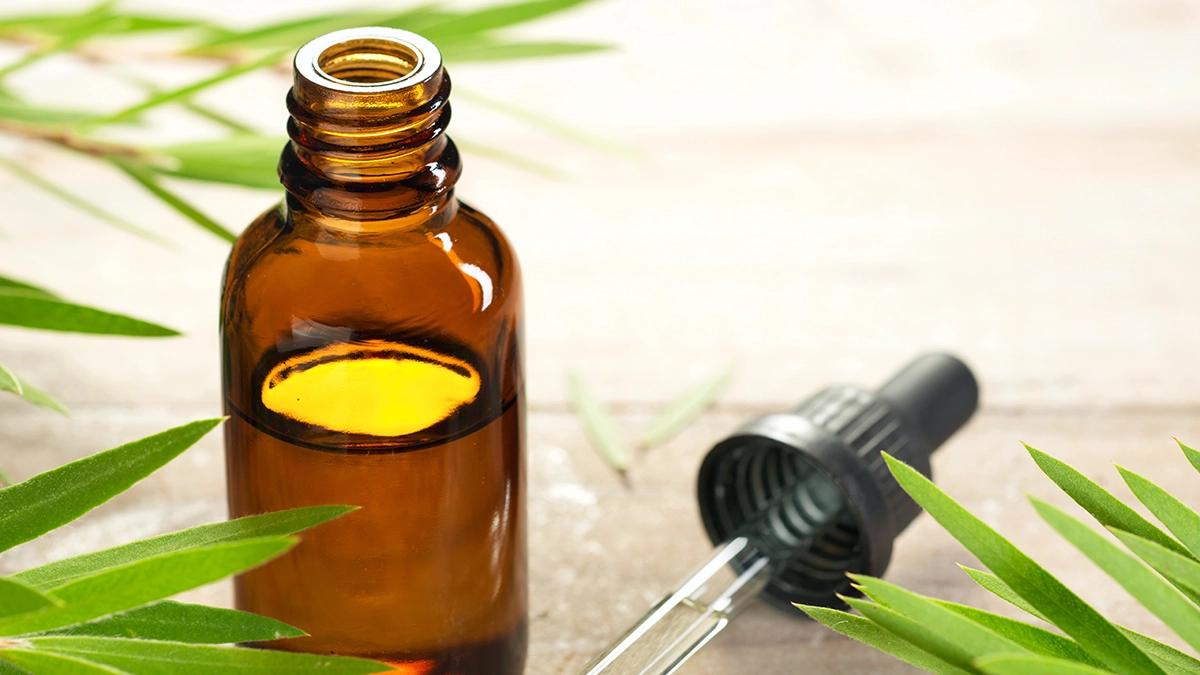
Tea tree oil is a reliable companion in combating oily skin, using its antibacterial and anti-inflammatory abilities to calm blemishes and minimize acne breakouts. Its clarifying properties make it adept at removing excess oil and impurities while balancing natural oils, ensuring that oily skin maintains a fresh, matte finish without being stripped of necessary moisture.
Incorporating tea tree oil into the skincare routine is akin to having a watchful protector that regulates excessive sebum production, while maintaining the skin’s health. This essential oil not only combats the present concerns of oily skin but also works to prevent future issues. Some benefits of tea tree oil for oily skin include:
- Regulating sebum production
- Fighting acne-causing bacteria
- Reducing inflammation and redness
- Unclogging pores
- Balancing the skin’s pH levels
By incorporating tea tree oil into your skincare routine, you can achieve balanced and clear skin.
Rosehip Oil for Dry Skin: Deeply Nourishing and Hydrating
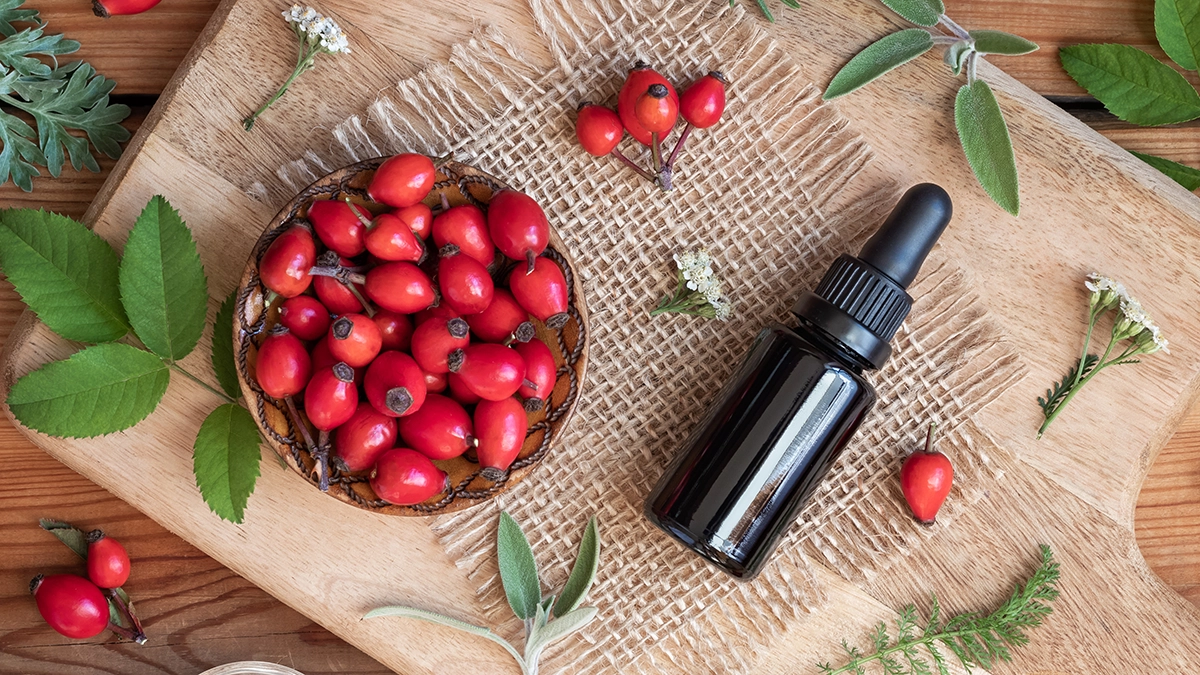
Rosehip oil, abundant in essential fatty acids such as linoleic and linolenic acid, acts as a stronghold against water loss, strengthening the skin’s cell walls and guaranteeing intense hydration. Its profound nourishing and hydrating capabilities provide relief for dry, itchy conditions, enveloping the skin in a cloak of moisture. Known as a ‘dry oil’, rosehip oil penetrates the skin with ease, leaving no oily residue, thus offering effective moisturization for those with dry skin types.
Beyond hydrating the skin, rosehip oil also possesses anti-inflammatory and healing properties that aid in the skin’s recovery and health. Dry skin, often craving for a drop of relief, finds in rosehip oil a rejuvenating spring that not only hydrates but also heals, leaving the skin supple, soft, and revitalized.
Frankincense Essential Oil for Aging Skin: Promoting Skin Health and Vitality
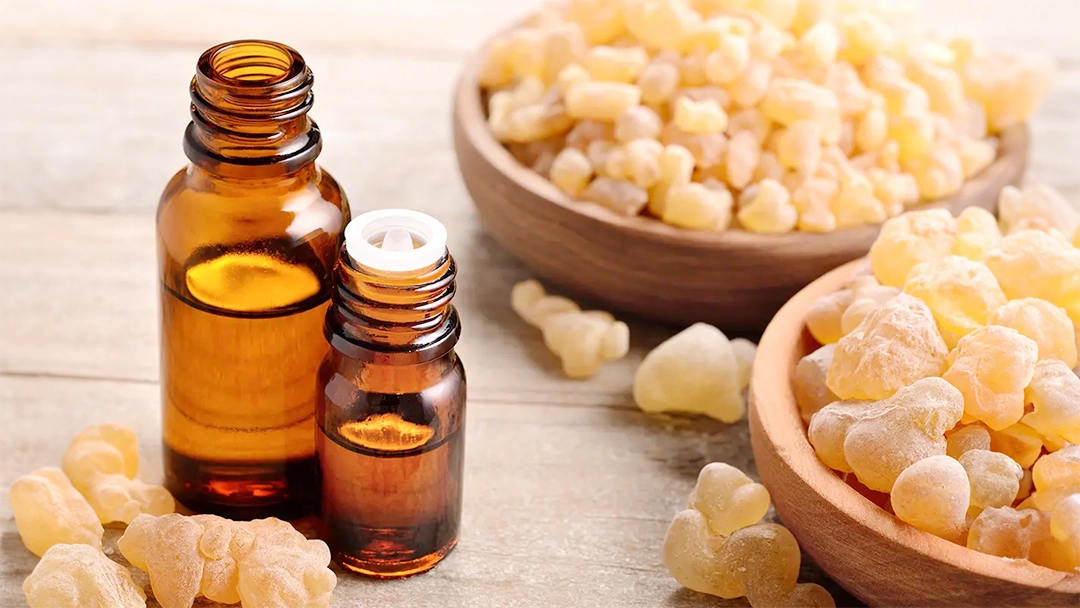
Frankincense essential oil is a revered antidote for aging skin, providing numerous benefits that enhance skin health and vitality. It encourages collagen production, which plays a vital role in diminishing the appearance of wrinkles and fine lines, giving the skin a smoother, more youthful look. This oil also tightens and tones the skin, improving elasticity and bestowing a lifted appearance that defies the passage of time.
Frankincense essential oil promotes collagen production primarily due to its active compounds, such as boswellic acids. These compounds have been studied for their anti-inflammatory and tissue remodeling properties, which are key factors in skin health and rejuvenation.
The antioxidants in frankincense oil offer several benefits for the skin, including:
- Standing guard against free radical damage and environmental stressors
- Decelerating the aging process
- Protecting the skin from premature aging
- Regenerating skin cells
- Enhancing texture
- Evening out skin tone
These properties of frankincense oil can help rejuvenate and give a vibrant appearance to aging skin.
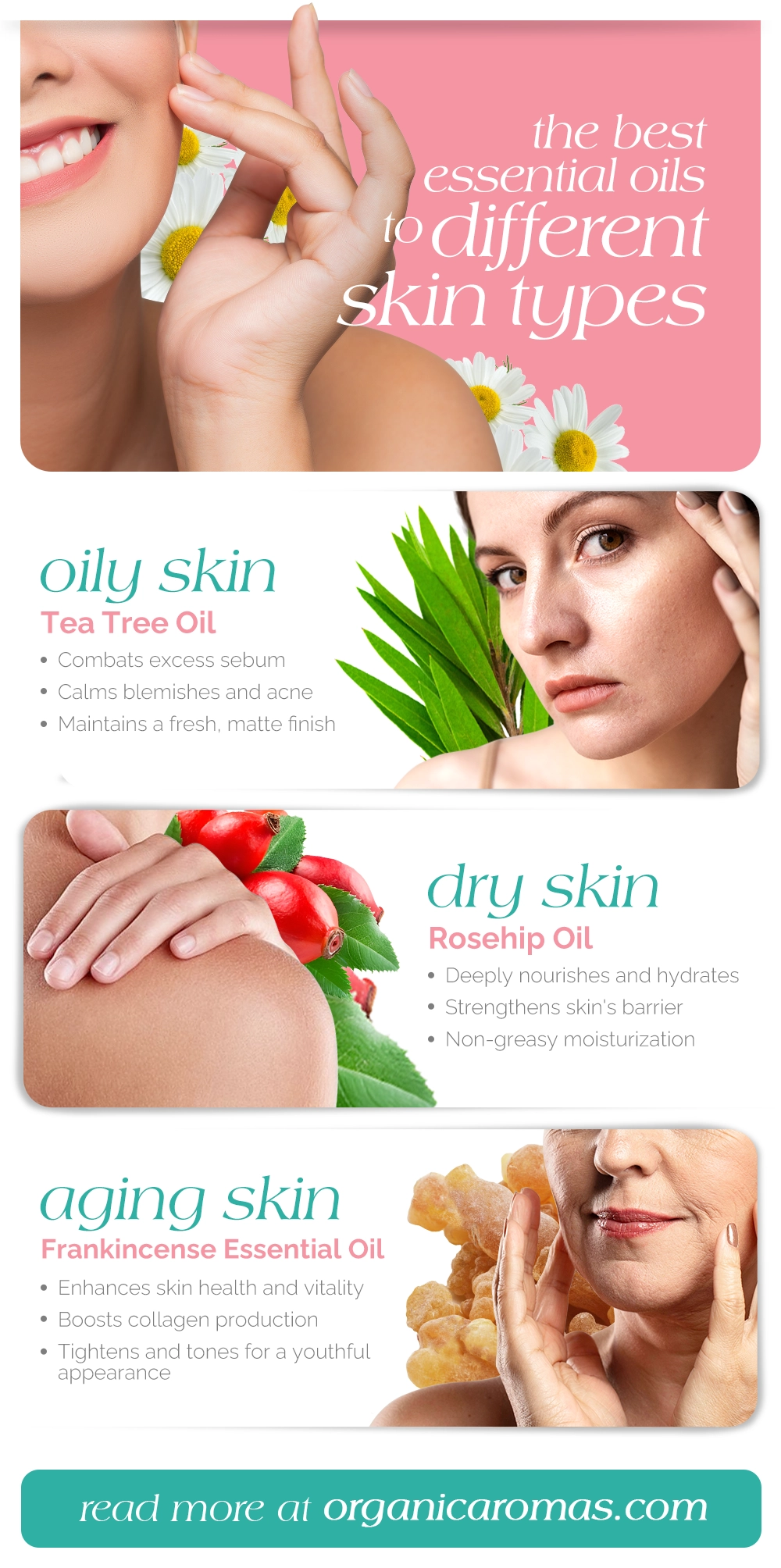
Safety First: How to Perform a Skin Patch Test with Essential Oils
Before fully adopting the benefits of essential oils in skincare, safety should be the primary concern. A skin patch test is an indispensable step, serving as a litmus test for potential skin reactions or allergies. This preventive step entails:
- Applying a small amount of diluted essential oil to the forearm or inner elbow.
- Covering it with a bandage.
- Monitoring for any negative effects over a two-day period.
Should any signs of allergy emerge, such as itchiness or redness, the area should be washed immediately, and the use of the essential oil discontinued.
A negative result to the patch test, though not definitive, indicates that it’s likely safe to continue using the oil. However, it’s vital to bear in mind that skin sensitivities can change, and what suits today may not be suitable tomorrow. Therefore, the skin patch test stands as a sentinel, ensuring that the path to enhanced skin health through essential oils is embarked upon with vigilance and care.
Creative Ways to Use Essential Oils for Skin Care
Essential oils are not just drops to mix with a carrier oil; they are flexible elements in the realm of skincare. Envision enhancing a simple moisturizer with a few drops of essential oils like rose otto or lavender, transforming it into a potion that provides additional skin benefits.
Or consider the luxury of crafting a face mask at home, infused with the likes of Manuka to cleanse the skin or Sacred Frankincense to even out the skin tone and reduce blemishes.
For those conscious of UV exposure, it’s wise to choose essential oils carefully, as some can cause phototoxic reactions when applied topically. In such cases, these oils are better used in wash-off products or inhaled for their therapeutic benefits without risking sun damage.
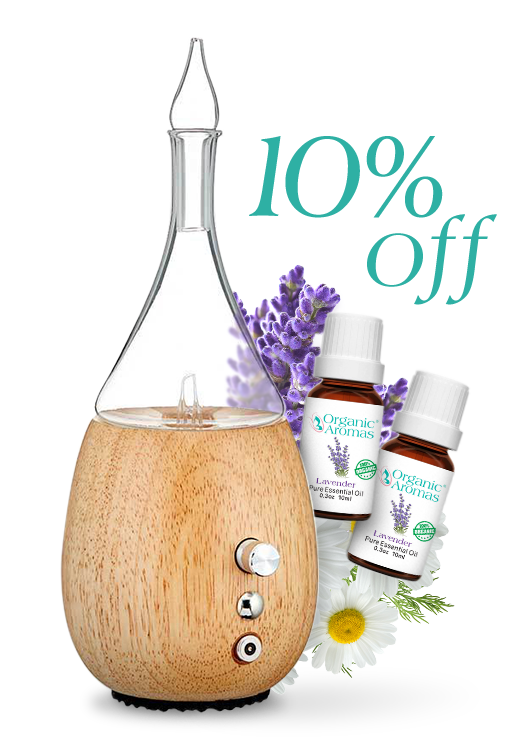
Join Now and Get a Coupon for %10 Off!
Essential Oils and UV Safety: Understanding Phototoxic Risks
Phototoxic reactions from essential oils occur when certain compounds within the oils react upon exposure to UV light, potentially causing skin irritation, redness, or burns. The compounds responsible for phototoxic reactions are primarily furanocoumarins (also known as furocoumarins).
Here’s a list of essential oils known for their phototoxic potential due to the presence of these compounds:
Bergamot Oil – Contains bergapten, a furanocoumarin that is highly phototoxic.
Lemon Oil (cold-pressed) – High in bergapten and other furanocoumarins.
Lime Oil (cold-pressed) – Similar to lemon oil, contains phototoxic compounds.
Grapefruit Oil (cold-pressed) – Contains bergapten, though to a lesser extent than bergamot.
Bitter Orange Oil (cold-pressed) – Contains bergapten and other furanocoumarins.
It’s important to note that steam-distilled versions of citrus oils (such as lemon and lime) typically do not contain furanocoumarins and are not considered phototoxic.
Some ways to incorporate essential oils into your skincare routine include:
- Using diffusers, like those from Organic Aromas, which emit a water-free mist of essential oils for aromatherapy that indirectly benefits the skin
- Creating hair growth blends with essential oils like lavender, rosemary, and peppermint, mixed with carrier oils like fractionated coconut oil and castor oil
- Adding a few drops of essential oils to your moisturizer or facial oil
- Making your own facial toner or mist with essential oils
- Using essential oils in DIY face masks or scrubs
The beauty of essential oils lies in their adaptability; they can be woven into various aspects of a skincare routine, offering a personalized and creative approach to skin health.
Adding a Few Drops to Your Moisturizer
Adding a few drops of essential oils like Rose Geranium, Jasmine, or Lavender to a moisturizer can enhance the skincare routine significantly. This not only imparts a luxurious scent but also infuses the skin with the oils’ inherent qualities. A simple guideline is to use a ratio of 10-15 drops of essential oil per 2 ounces of lotion (approximately 60 milliliters), ensuring that the essence does not overwhelm the base product.
Crafting a homemade natural moisturizer becomes an art form—an example blend might include:
- lavender essential oil
- frankincense essential oil
- aloe vera gel
- fractionated coconut oil
This creates a soothing, skin-loving concoction.
Blending essential oils into a moisturizer is similar to adding spices to a meal—it improves the experience, adding layers and complexity. This practice not only imparts additional benefits to the skin but also turns a daily routine into a moment of indulgence, offering a sensory journey alongside the promise of healthier skin.
Essential Oil Infused Masks: An At-Home Spa Experience
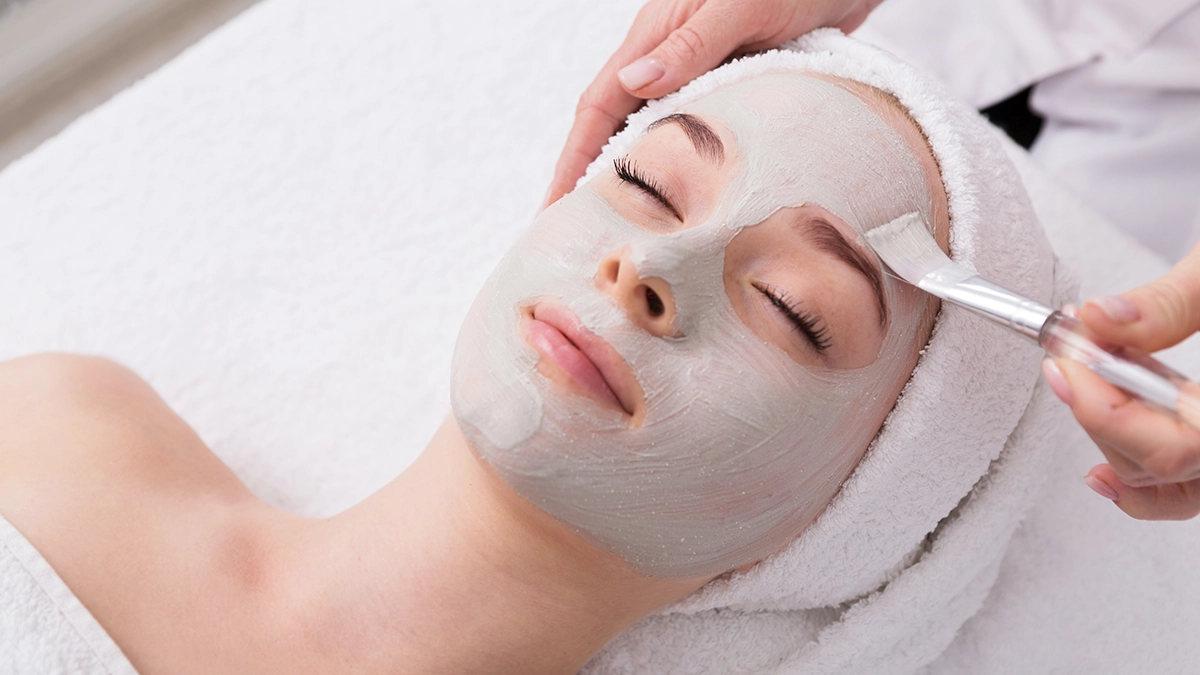
Creating an essential oil-infused mask invites you to enjoy an at-home spa experience tailored to your specific skin needs and preferences. Some essential oils that can be used in a mask include:
- Frankincense essential oil, which can accelerate cell turnover and help fade scars and dark spots, contributing to a more even and radiant skin tone.
- Lavender essential oil, which has soothing properties and can help calm irritated skin.
- Tea tree essential oil, which has antibacterial properties and can help treat acne-prone skin.
- Rosemary essential oil, which has antioxidant properties and can help improve the overall appearance of the skin.
A weekly clay facial mask might include bentonite clay, apple cider vinegar, and a thoughtful selection of essential oils. Apply the mask to clean skin and gently rinse it off after drying. This mask can cater to diverse skin types and provide various benefits.
A refreshing body scrub presents another opportunity to reap the benefits of essential oils. Combining coconut oil with Epsom salt and Lavender essential oil creates a simple yet effective scrub that not only exfoliates but also deeply nourishes the skin. These DIY spa treatments empower individuals to create personalized skincare solutions, infusing routine with relaxation and effectiveness, all from the comfort of their own home.
When Essential Oils May Not Be Suitable for Skin Care
Despite the myriad benefits of essential oils, they might not be ideal for everyone. People with increased sensitivities, like those who have undergone chemotherapy or are pregnant, need to proceed with caution and seek expert advice before incorporating essential oils into their skincare regimen due to potential skin sensitivity. Similarly, those with certain skin conditions like eczema, psoriasis, or rosacea should heed the guidance of dermatologists and possibly steer clear of using essential oils on affected areas.
Additionally, certain essential oils, such as lemon, camphor, and clary sage, are more prone to cause skin irritation or sensitization, especially in individuals with allergies. It’s a reminder that the world of essential oils is complex, and while they are generally safe when used correctly, essential oils bad reactions can occur if not used properly. Thus, due diligence in the form of a patch test and professional consultations are essential steps in ensuring that these potent botanical extracts do more good than harm.
The Impact of Sun Exposure on Essential Oil-Treated Skin
Sun exposure can have a substantial effect on skin treated with essential oils. Certain essential oils, particularly those containing furanocoumarins, can induce phototoxic reactions when exposed to UV light, leading to skin inflammation, blistering, or even long-term discoloration. Citrus oils that fall into this category include:
- Bergamot
- Grapefruit
- Lemon
- Lime
These oils demand caution and proper dilution before use. The severity of phototoxic reactions varies based on factors such as the concentration and amount of essential oil applied, as well as the length and intensity of UV exposure, with symptoms typically emerging within 24 to 72 hours.
To reduce the risk of phototoxicity, it’s important to dilute essential oils appropriately and protect the skin from sunlight or UV rays for an extended period after application. This practice of mindfulness can prevent the unintended consequences of combining nature’s gifts with the sun’s energy, ensuring that the use of essential oils remains a source of nourishment rather than concern.
Olive Oil and Lavender Oil: Healing and Restoring Skin Barrier Function
Olive oil and lavender oil create a restorative pair, with olive oil’s skin barrier fortifying properties supplementing the calming anti-inflammatory capabilities of lavender essential oil. Lavender oil is not only effective in reducing redness and providing relief from skin irritations like eczema and rosacea, but it also helps to balance blotchiness and even out skin tone without leaving a greasy residue.
This combination is particularly beneficial after exposure to harsh elements or when the skin is in dire need of repair. The benefits of this combination include:
- Anti-inflammatory properties of lavender oil
- Nourishing effects of olive oil
- Healing and protecting the skin
- Restoring natural resilience and glow
Expert Tips for Blending Essential Oils for Maximum Skin Benefits
Combining essential oils for skin benefits is a skill that demands knowledge of the oils’ effects, their compatibility, and their evaporation rates. Aromatherapists often categorize essential oils into groups such as:
- citrus
- floral
- herbal
- spicy
- woody
They apply the 30/50/20 blending rule for a balanced fragrance. Creating dynamic and lasting aromas in blends involves considering the top, middle, and base note oils’ different evaporation rates and blending in small batches to ensure freshness and potency.
For maximum skin benefits, it’s crucial to adhere to safety guidelines, such as never exceeding a 3% dilution rate and being mindful of phototoxicity levels in certain oils. Blends should target specific skin improvements, like enhancing skin tone with Celery Seed essential oil. To protect the blend’s aromatic and therapeutic properties, store them in a cool, dark location with air-tight amber glass bottles.

Join Our Exclusive Member Club to get Big Discounts!
The Importance of Quality and Sustainability in Essential Oils
The path towards incorporating essential oils in skincare is not only about personal benefits but also about acknowledging the significance of quality and sustainability. Fair trade practices ensure local communities are fairly compensated, leading to better living standards and community investments.
Ethical sourcing is about more than just the purity of essential oils; it involves forming direct partnerships between producers and communities for mutual benefits. Certifications from organizations like Fair For Life and the Sustainable Agriculture Network (SAN) are testaments to the commitment to ethical sourcing and fair trade practices.
Sustainable sourcing practices are not only about minimizing environmental impact but also about conserving biodiversity and preventing the endangerment of vital plant species. When raw materials are procured with a focus on sustainability and social responsibility, the resulting essential oils are of a higher quality, derived from verified botanical species and harvested at the optimal time without adulteration.
It is worth noting that the prices of high-quality essential oils often reflect the extensive resources required for ethical extraction and distribution, hinting that lower prices may involve compromises in quality.
The Bottomline on Essential oils for Skin Care
In the quest for skin wellness, essential oils emerge as a natural and potent solution, offering a spectrum of benefits tailored to different skin types and concerns. From the careful distillation process that ensures their purity to the synergistic relationships with carrier oils and skin cells, these aromatic treasures can enhance skin health and address specific conditions. However, safety and sustainability remain paramount, guiding the judicious use and responsible sourcing of these precious botanical extracts. As we integrate essential oils into our skincare routines, let us do so with knowledge, care, and a commitment to the well-being of both our skin and the world around us.
Frequently Asked Questions
What essential oils should not be used directly on skin?
It is important to avoid using citrus oils such as lemon, orange, and bergamot on the skin, as they can be phototoxic and cause skin to burn and blister. Additionally, cinnamon bark, clove, lemongrass, oregano4, peppermint, and jasmine oils are also known to cause skin irritation so be sure to dilute.
Do essential oils get absorbed into the skin?
Yes, essential oils can be absorbed into the skin, as evidenced by a study showing that 75% of applied fragrance compounds were absorbed when the skin was covered after application.
Do essential oils clog pores?
Essential oils typically don’t clog pores; instead, they offer antimicrobial5 and anti-inflammatory benefits, aiding in acne management. Unlike carrier oils, which may contain Vitamin E and omega-3s for skin health, essential oils are used for their healing properties.
Is it OK to put essential oils on your body?
Yes, it is generally safe to put essential oils on your body as long as they are used externally and in low concentrations, usually no higher than 5%.
How do I know if an essential oil is of high quality?
To assess if an essential oil is of high quality, check if it comes from verified botanical species, is harvested at the right time, and produced without adulteration. Also, look for certifications from reputable organizations and evidence of rigorous testing, such as GC/MS (Gas Chromatography/Mass Spectrometry), which verifies purity and composition.
- Rashed, A., Rathi, D., Nasir, N., & Rahman, A., 2021. Antifungal Properties of Essential Oils and Their Compounds for Application in Skin Fungal Infections: Conventional and Nonconventional Approaches. Molecules, 26.
- Avola, R., Granata, G., Geraci, C., Napoli, E., Graziano, A., & Cardile, V., 2020. Oregano (Origanum vulgare L.) essential oil provides anti-inflammatory activity and facilitates wound healing in a human keratinocytes cell model.. Food and chemical toxicology : an international journal published for the British Industrial Biological Research Association, pp. 111586
- Alhasso, B., Ghori, M., & Conway, B., 2022. Systematic Review on the Effectiveness of Essential and Carrier Oils as Skin Penetration Enhancers in Pharmaceutical Formulations. Scientia Pharmaceutica.
- Avola, R., Granata, G., Geraci, C., Napoli, E., Graziano, A., & Cardile, V., 2020. Oregano (Origanum vulgare L.) essential oil provides anti-inflammatory activity and facilitates wound healing in a human keratinocytes cell model.. Food and chemical toxicology : an international journal published for the British Industrial Biological Research Association, pp. 111586
- Lee, S., Chow, P., & Yagnik, C., 2022. Developing Eco-Friendly Skin Care Formulations with Microemulsions of Essential Oil. Cosmetics.

